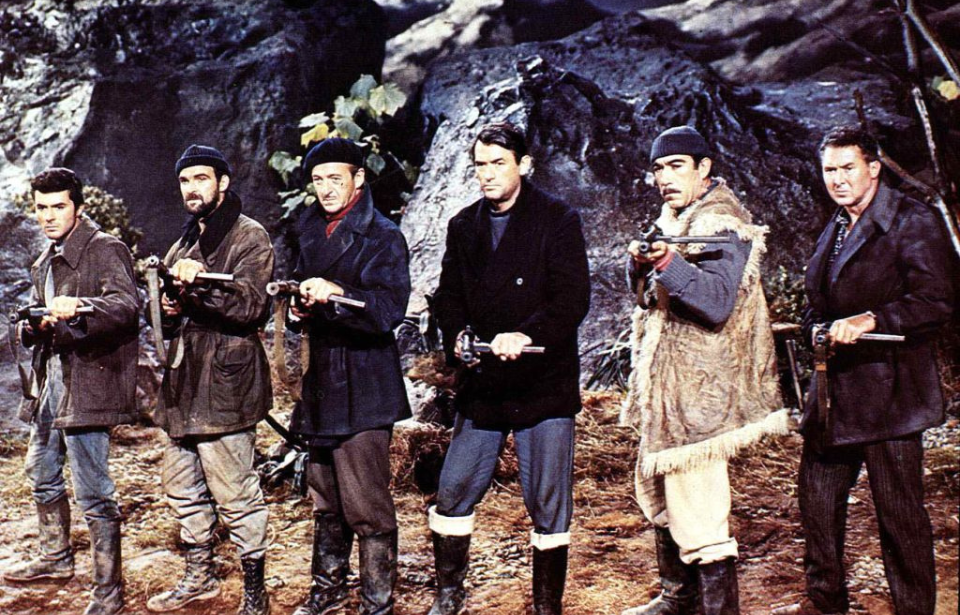Since the end of World War II, countless films about the conflict have been produced, which means some have regrettably not received the recognition they truly deserve—or have faded from memory over time. One such film is The Guns of Navarone (1961). Featuring Gregory Peck, David Niven, and Richard Harris, this thrilling Commando adventure is a must-see for any film fan.
Turning a best-selling novel into a feature-length film
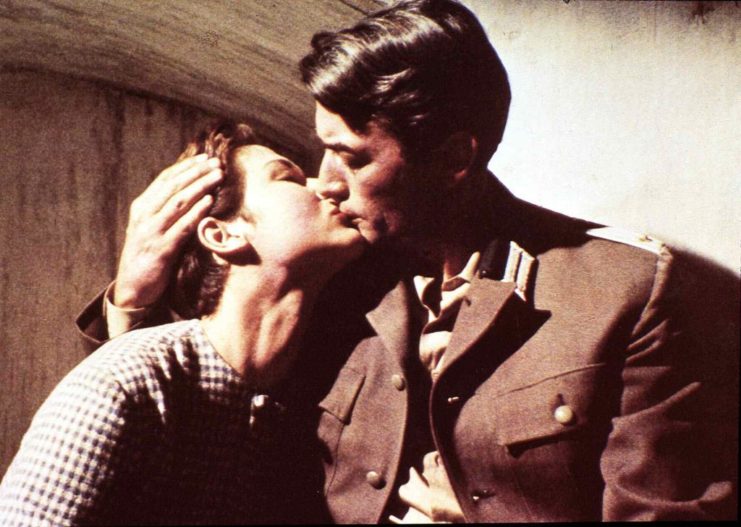
The Guns of Navarone is based on the best-selling 1957 novel by Alistar MacLean. While not centered around an actual real-life mission of the Second World War, the story does take place during the Dodecanese Campaign of 1943 – the failed Allied attempt to capture the Dodecanese Islands from the Axis powers following the signing of the Italian Armistice. For many, it’s considered British Prime Minister Winston Churchill‘s worst military blunder of the conflict.
The book was read by Columbia Pictures’ Mike Frankovich, who’d served with the US Army Air Corps during WWII. He saw its cinematic potential and passed the story along to Carl Foreman, the mastermind behind the screenplay for The Bridge on the River Kwai (1957). While Foreman was initially hesitant to turn the book into a movie, he later agreed to write the screenplay, albeit with a few changes.
What is The Guns of Navarone about?
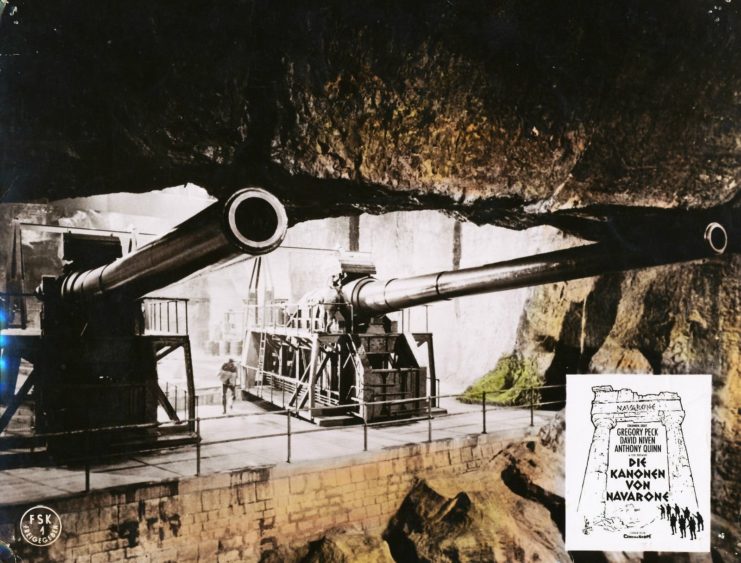
As aforementioned, The Guns of Navarone was inspired, in part, by the Dodecanese Campaign – more specifically, the Battle of Leros. Taking place in 1943, it centers around a hastily-formed Commando unit tasked with infiltrating the fictional Navarone Island and destroying its German long-range field gun emplacements. Those involved include an officer with the Long Range Desert Group (LRDG), an explosives expert and an expert knife fighter known as the “Butcher of Barcelona.”
While many would assume the guns would be of lesser importance, compared to other German-held areas in the Mediterranean, they’re position means the Allies are unable to rescue around 2,000 trapped British soldiers on the nearby island of Kheros. Whenever vessels get near, the Germans aim their guns and fire, sinking them.
To successfully cross the Aegean Sea, the Commandos disguise themselves as Greek fishermen, and later meet up with two local resistance fighters who’d previously been captured by the Germans. Throughout the course of their journey, they come face-to-face with enemy soldiers, at one point overpowering the Germans and donning their uniforms so as to not be recognized.
As the film progresses, it’s assumed the Commandos aren’t destined for success. One of the resistance fighters is found to have been recruited by the Germans, ultimately leading to her execution. As well, when the group finally arrives at the cliffs housing the gun emplacements, they find themselves beaten time and time again, with the Germans defusing their explosives and forcing them to fight in brutal close-quarters combat.
In the end, the surviving Commandos flee Navarone aboard Allied destroyers, but not before they’re somehow able to take out the long-range field guns and the impregnable fortress in which they’re held with one magnificent explosion.
A star-studded cast filled with World War II veterans
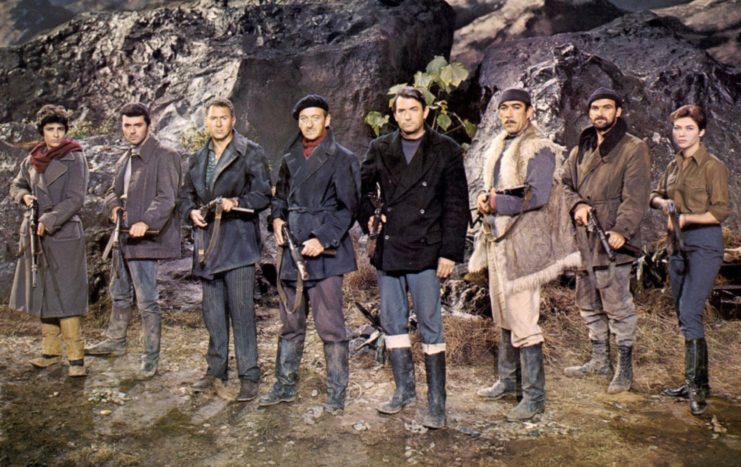
Similar to a lot of WWII-era films produced during the 1950s and ’60s, a number of those who starred in The Guns of Navarone actually served in the conflict. Among the most decorated was British actor David Niven, who commanded a Commando squadron during D-Day and Operation Market Garden. Additionally, he aided in the creation of the Supreme Headquarters Allied Expeditionary Force’s (SHAEF) efforts to entertain troop via radio.
James Justice, who portrayed Jensen, also served, first during the Spanish Civil War and, later, with the British Royal Naval Volunteer Reserve. While seeing action in 1943, a German shell detonated, with its shrapnel injuring him enough to be honorably discharged.
Allan Cuthbertson served as a flight lieutenant for the Royal Australian Air Force, seeing action in the Pacific Theater with the No. 111 Air-Sea Rescue Flight RAAF, while Anthony Quayle is best known for having organized guerrilla forces in Albania during the conflict.
Other military veterans included Percy Herbert, Michael Trubshawe and Christopher Rhodes. Gregory Peck, who portrayed Capt. Keith Mallory, was among the few who didn’t enlist – but not because he didn’t want to. He was exempt from US military service because of a back injury he’d previously suffered.
This star-studded cast also included other big names, including Anthony Quinn, Stanley Baker, Richard Harris, Irene Papas and Gia Scala.
Making the film as authentic as possible
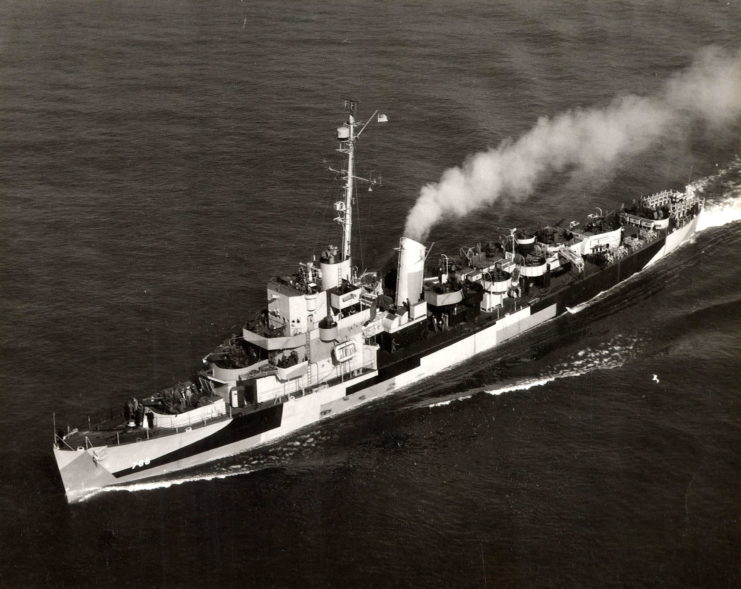
Although The Guns of Navarone is a work of fiction, its creators aimed to achieve the highest level of authenticity. This effort included filming on the Greek island of Rhodes and other Mediterranean sites. The team even managed to secure the former USS Slater (DE-766), a genuine warship that had been transferred to Greece for training purposes.
Before shooting began, there were worries that Gregory Peck’s struggle with German dialogue might impact the film’s credibility. To address this, Columbia Pictures enlisted voice actor Robert Rietty to dub all of Peck’s German lines. Authenticity was further enhanced by employing mapmakers with experience in animated films.
However, one element of The Guns of Navarone undermines the filmmakers’ pursuit of realism: the age of the cast. Most, if not all, of the actors appeared significantly older than their characters, a fact that did not go unnoticed by audiences. The British press even went so far as to dub the movie, “Elderly Gang Goes Off to War.”
Successful, yet underrated
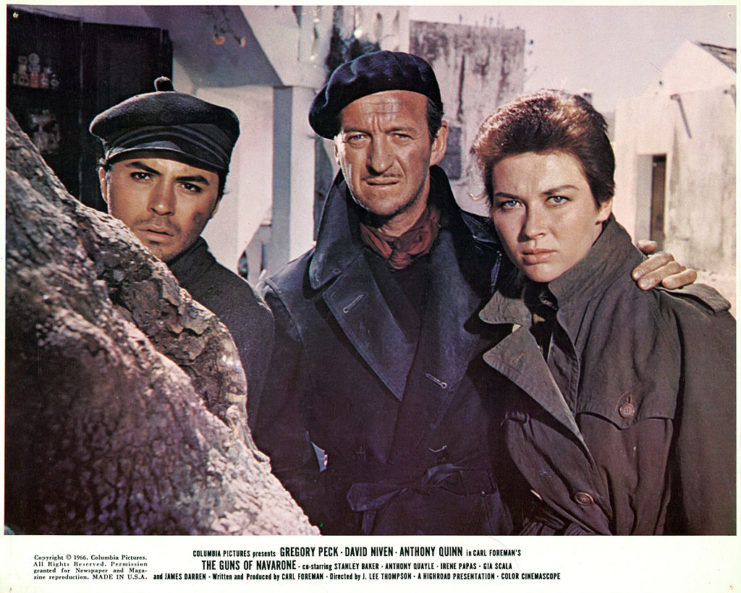
It might be surprising to learn that The Guns of Navarone earned a number of honors upon its release, as we’ve called it one of Hollywood’s most underrated films. It became the second top-grossing movie of 1961, behind West Side Story, and was dubbed “the best adventure movie to hit the screen this year” by the Los Angeles Times. On top of that, it received seven Academy Award nominations and ultimately won the Oscar for Best Special Effects.
So why do we believe The Guns of Navarone to be so underrated? There are a number of reasons, the first of which being that the majority of war film buffs today rarely bring it up when asked to discuss their favorite movies in the genre. Instead, they’ll reference Kelly’s Heroes (1970), The Longest Day (1962), Apocalypse Now (1972), The Great Escape (1963) and Platoon (1986). Sure, those are all great films, but where is The Gun of Navarone on the list?
This could be for a number of reasons. Maybe it’s because the majority of the cast is made up of British actors, as opposed to a largely-American cast that many would recognize. Another theory is that it was released during a time when so many WWII-era films were hitting the big screen, meaning it got lost in the shuffle as the decades went on.
Maybe it’s because The Guns of Navarone is ultimately an anti-war film, something that can have a polarizing effect on audiences, who themselves are either strongly pro- or anti-war. Regardless of the reason, the whole point of this article is to get you, the reader, to watch the film, if you haven’t previously done so.
Little-known facts about The Guns of Navarone
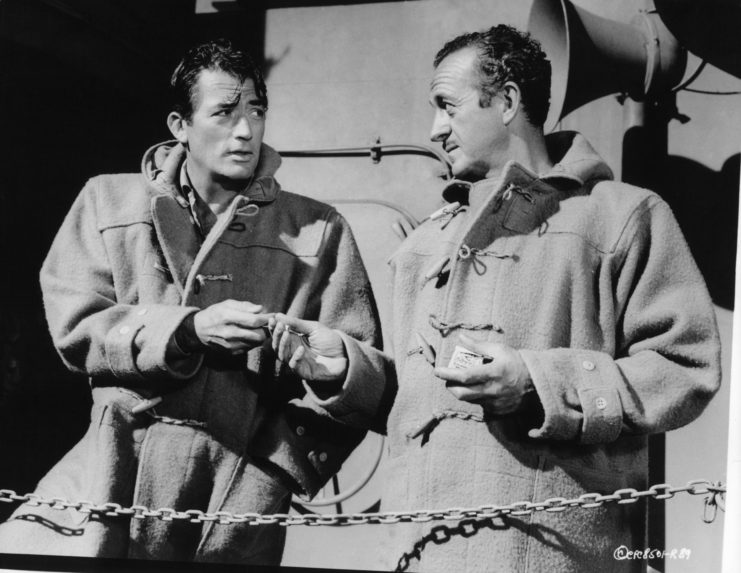
Now that we’ve gotten all that out of the way, it’s time to share some little-known facts about The Guns of Navarone, the first few of which involve David Niven. If you look closely, you’ll notice his character, Cpl. John Anthony Miller, wears a Light Infantry cap badge on his beret. This is significant, as it was the regiment the actor himself was commissioned into during WWII.
On a more worrisome note, Niven nearly lost his life while filming. While shooting a scene in a dirty tank of water and suffering from a split lip, he became seriously ill, with the crew worried he’d fall victim to the fatal infection that was ravaging his body. He spent weeks in the hospital and, against medical advice, wound up returning to set to complete his scenes. This ultimately led to another seven weeks of recovery time.
This third fact isn’t just about Niven, but it does involve him. While filming The Guns of Navarone, he forged what became a life-long friendship with Gregory Peck, whom he admired for his ability to drink large amounts of brandy and still recite his lines. The pair became so close that Peck even delivered the eulogy at Niven’s funeral after he passed in 1983.
Since we’re on the topic of Peck, you might be interested to learn that he wasn’t the first actor tapped to portray Capt. Mallory. William Holden was initially approached about the role, but wound up turning it down, as he believed it was too similar to his portrayal of Cmdr. Shears in The Bridge on the River Kwai.
New! Want to become a trivia master? Sign up for our War History Fact of the Day newsletter!
More from us: Fascinating Facts About ‘Platoon’ – Oliver Stone’s Best Movie
Finally, those with keen eye likely noticed some familiar faces in the background of the scene set at the Mandrakos café. There’s a reason why. On the day it was shot, members of the Greek Royal Family visited the set and were invited to appear in the film as extras!
